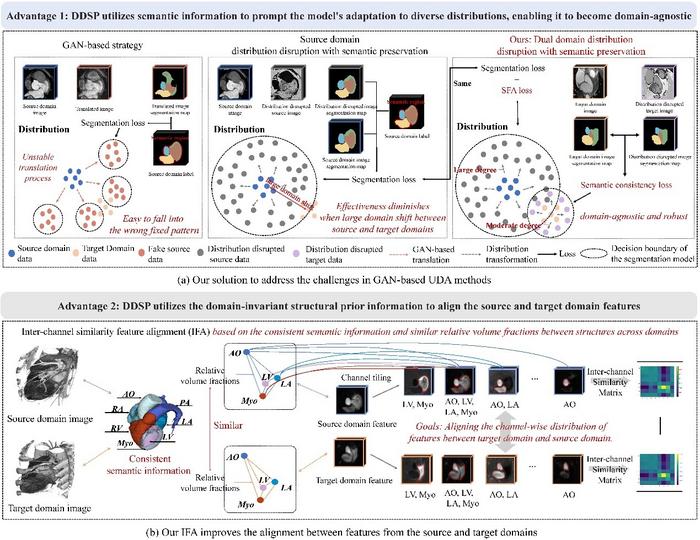Recently, a research team led by Prof. QIN Wenjian from the Shenzhen Institute of Advanced Technology (SIAT) of the Chinese Academy of Sciences (CAS) developed an unsupervised domain adaptation (UDA) approach, the dual domain distribution disruption with semantics preservation (DDSP) framework, achieving high-precision cross-modality segmentation without dependency on target modality labels.

Credit: Prof. QIN Wenjian
Recently, a research team led by Prof. QIN Wenjian from the Shenzhen Institute of Advanced Technology (SIAT) of the Chinese Academy of Sciences (CAS) developed an unsupervised domain adaptation (UDA) approach, the dual domain distribution disruption with semantics preservation (DDSP) framework, achieving high-precision cross-modality segmentation without dependency on target modality labels.
The findings were published in Medical Image Analysis on Jul. 14.
Medical imaging stands as a cornerstone of modern diagnostics. However, variability in imaging modalities and the scarcity of target labels pose significant challenges to precise segmentation.
To solve this problem, the researchers proposed the DDSP framework, a paradigm shift in UDA, offering a novel solution that diverges from the complexities of generative adversarial networks (GANs). This approach champions a model inherently adaptive and agnostic to domain variations, thereby simplifying the process and enhancing reliability.
“DDSP embodies the essence of simplicity and efficiency,” said Prof. QIN. “It transcends the intricacies of GAN-based methods by leveraging a distribution disruption module to increase the diversity of image distributions around the source domains, while being constrained by semantic information to facilitate adaptation to distinct distributions.”
Furthermore, the researchers enhanced the framework by incorporating an inter-channel similarity feature alignment. They skillfully utilized the consistent semantic information and anatomical uniformity present across diverse imaging modalities, thereby boosting the framework’s flexibility and precision in recognizing features.
Finally, the researchers validated the proposed method on three public medical imaging datasets, with results showing that DDSP outperformed current UDA techniques. Importantly, its efficacy is comparable to that of fully-supervised models, indicating its potential to facilitate high-quality medical image analysis without extensive target labeling requirements.
The proposed method has great potential to address the challenges of domain adaptation in medical image segmentation tasks, providing a promising avenue for future research in the field.
Journal
Medical Image Analysis
Method of Research
Commentary/editorial
Subject of Research
Not applicable
Article Title
Dual domain distribution disruption with semantics preservation: Unsupervised domain adaptation for medical image segmentation
Article Publication Date
14-Jul-2024



